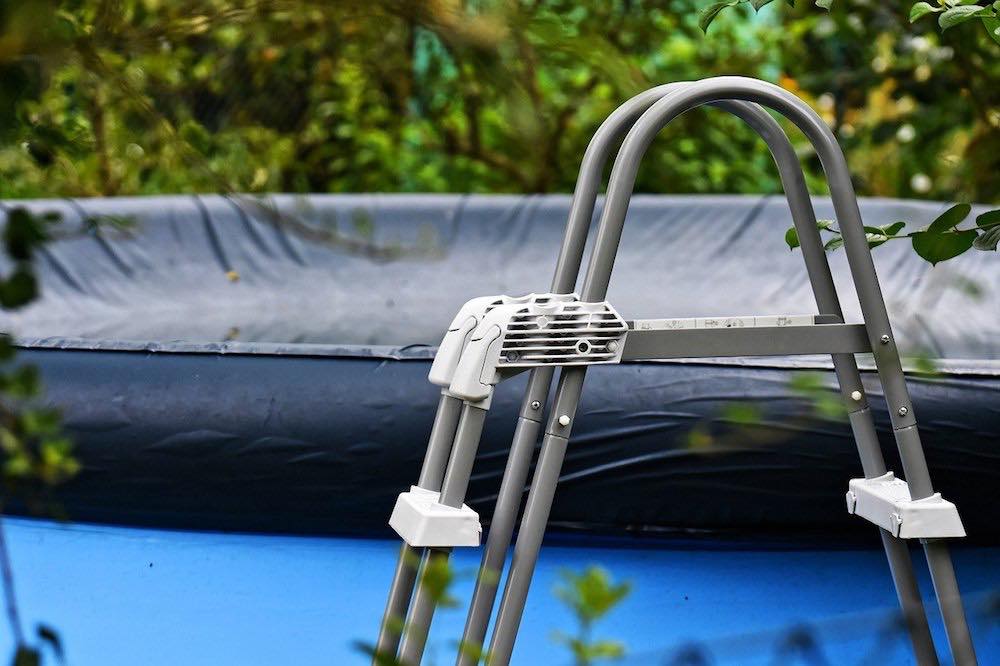
I’ve been looking into all things hedgehog for this site and wondered can hedgehogs swim? The answer surprised me, and showed that there is a lot to think about in order to keep animals such as hedgehogs safe in the garden.
So can hedgehogs swim? Yes hedgehogs can swim. In fact they are strong swimmers. Their bodies contain thousands of quills which have pockets of air to make them buoyant. They will be tired after short periods of swimming. Ponds and pools can be hazardous to hedgehogs as they find it difficult to climb out and can drown.
The above is the short answer to the question can hedgehogs swim? There is of course much more to it than this. When I was researching this I also found that people asked other seemingly random questions such as can hedgehogs attack humans?
Read on to find out more about how they swim, how you can keep them safe in the garden and what to do if you have a pet hedgehog and want to teach it to swim.
Contents
Can Hedgehogs Swim?
So we can see that yes hedgehogs can swim. In fact hedgehogs are quite good swimmers. This is in large part due to the way nature designed them!
That’s not to say swimming can’t be hazardous to hedgehogs. There are many dangers for hedgehogs in your garden. Even the type of food you leave out can be harmful to hedgehogs. Hedgehogs have a good sense of smell, and are always on the lookout for leftover food.
For example did you know that hedgehogs cannot eat pumpkin, and leaving this out for them can actually kill them? You can supplement a hedgehogs diet with foods like rice safely though.
A hedgehogs body is covered with thousand of sharp spikes which are knows as quills. According to the San Diego Zoo they have between 3000 and 5000 of these quills covering a large part of their bodies. Yikes that’s a lot of spikes!
A hedgehog uses its quills for a variety of things. The most common and well known use a hedgehog has for its quills is for protection against predators such as rats, which can try to attack them while they are sleeping. You will often see a hedgehog rolled up into a ball, with only the quills showing.
When a hedgehog feels threatened they will take this defensive position to protect themselves.They do this by using their stomach and back muscles to curl themselves up into a ball, pulling in their head and feet.
All that is left showing is a criss cross patter of spikes. This makes it almost impossible for a predator to try to eat a hedgehog.
Buoy Can Hedgehogs Float

What you probably don’t know is that a hedgehogs quills can serve an altogether different purpose. Each of the 3000 to 5000 quills covering a hedgehog is actually filled with tiny pockets or chambers of air.
These pockets of air make hedgehogs naturally buoyant. This is what helps to make a hedgehog a good swimmer, and helps us in understanding the question can hedgehogs swim?
What about the different breeds of hedgehogs? Can all hedgehogs swim, and will they all swim? Well yes all of the breeds of hedgehogs can swim. They are all naturally buoyant, and all make good swimmers.
Will they all swim? More than likely the answer to this is no. There are some hedgehogs living in dessert like countries that will probably never encounter water. The fact is there really isn’t much need for them to do this at all.
There are times when a hedgehog will swim across water to get to food if they are hungry and they know there is food on the other side of or in the water.
Hedgehogs like to eat insects, and often these can be found in and around ponds and swimming pools. This will attract hedgehogs and you may find them in your pond or pool as a result. They do however prefer lukewarm water over cold water.
Now as I said, hedgehogs are good swimmers, but they cannot sustain swimming for long periods of time. They will become tired pretty quickly, and if they are in the water for too long they will struggle and drown.
If they get tired they can roll into their defensive position to lie on their back and float. This can’t be sustained for too long, and they will need to get out quickly once they become tired.
How Can I Protect A Hedgehog From Drowning?
If we know hedgehogs can in fact swim, and that they are attracted to ponds and pools, is there anything we can do to protect them from drowning? As I said above, hedgehogs can only swim for a short amount of time, and after this they will become tired and start to struggle in the water.
Ponds and pools in gardens are actually a major hazard for hedgehogs, and if this is not treated seriously it will in fact cause the death of many hedgehogs. Once hedgehogs enter ponds and swimming pools, it can be extremely difficult or impossible for them to get back out again.
Gentle Slopes
There are some simple steps you can take to prevent this from happening. Gently sloping sides to your pond will allow a hedgehog to climb out of the water safely and easily. However, if it is a large pond just one of the sides being gently sloped may not be enough to prevent a hedgehog from drowning.
Covering Your Pond Or Swimming Pool

If you’re pond is not gently sloped at the sides to allow hedgehogs to climb out, you could consider buying a cover for your pond. Covering a pond or a swimming pool will prevent hedgehogs from entering altogether and means they will be safe from drowning.
Creating Ramps
If your pond is not easy to climb out of, and you don’t want to cover it, you should consider placing planks at intervals around the edges to allow the hedgehogs to use to climb out safely.
Adding Rock Features

Adding rock features to your pond will not only make it look nice, but can give a hedgehog something to climb onto when trying to get out of a pond. These can be layered inside the pond around the edges to allow the hedgehogs to climb on them and safely out of the water.
Hedgehog Ladders
Believe it or not hedgehog ladders are a real thing. I had not heard of these at all until I started to do some research for this post. These are a very cheap end very effective way of keeping hedgehogs safe if you have a pond in your garden.
They are simply pieces of wood with rungs on them that function very much like the ramps mentioned above. Simply place these at the edge of your pond and a hedgehog will use this to climb out safely.
Chemical Free Ponds
If you know hedgehogs swim in your pond, or think there is a chance that they might, then you should keep your pond chemical free. Chemicals in water are harmful to hedgehogs and should be avoided.
For this reason you should avoid using any kind of carpeting or cushioning in your pond as they could release harmful toxins or chemicals used to make them into your pond water.
Can Hedgehogs Swim In Swimming Pools?
Can hedgehogs swim in swimming pools? Well technically they can swim in any water, but they really should not swim in swimming pools. The vast majority of swimming pools will have chlorine in them.
This is harmful to hedgehogs. It can cause skin irritation, irritation of the eyes, and can ultimately kill them if they swallow too much of the water. Other chemicals used to clean pools can also be harmful to a hedgehog in just the same way.
Also most swimming pools will be impossible for hedgehogs to climb out of. Unless heated, the water will also be too cold for hedgehogs.
If you have a swimming pool in your garden, you should consider covering it to prevent animals such as hedgehogs swimming in them.
Do Hedgehogs Need To Swim?
Hedgehogs in the wild generally don’t really need to swim. Like I said there will be hedgehogs in some countries that have dessert terrain that will probably never see pools of water such as ponds or swimming pools.
They may enter enter if they need to swim across to access food at the other side. Or they may enter a pond if they see insects in or around it that they can eat.
Hedgehogs also don’t need water to keep themselves clean. They are self-cleaning animals, and will use their paws and tongues to clean themselves in the way many house pets do.
However if you have a pet hedgehog that is kept in captivity rather than in the wild, it can suffer from a lack of exercise an become obese.
Swimming for pet hedgehogs can provide exercise that will help to maintain a healthier body weight. If you allow your pet hedgehog to swim, you should supervise it at all times.
Should My Hedgehog Have A Bath?
As I said above, a hedgehog is a self-cleaning animal like many house pets are. It will use its tongue and paws to keep clean. Hedgehogs happily live in the wild on their own without anyone to give them a bath, and survive this just fine.
If you have a pet hedgehog, and it gets particularly dirty, or starts to smell, it is acceptable to give it a bath. Using soap or shampoo should be avoided though.
Just like the chlorine in a pool, this can cause eye and skin irritation to a hedgehog. It is not natural for a hedgehog to use these things, as they would not encounter them in the wild.
If you do want or need to give a hedgehog a bath, there are some rules you should follow.
- Do not leave the hedgehog unattended in the water.
- Use of shampoo and soap needs to be avoided.
- This should not be done more than 2 or 3 time month as too much water can cause a hedgehogs skin to dry out.
- You should not have the hedgehog in the water for more than ten to fifteen minutes.
- Lukewarm water should be used as opposed to either cold or hot water.
How Can I Teach A Hedgehog To Swim?
Hedgehogs instinctively learn to swim in the wild, and don’t need any help with this. If you have a baby hedgehog as a pet, and want to teach it to swim, it is fairly easy to do. However, you have to do this safely and in a way that does not cause it to be stressed or anxious.
When a hedgehog first starts to swim, it will be cautious. It not uncommon for a hedgehog to wee or poo in the water if it is stressed or anxious.
If you want to teach a hedgehog to swim, start of by gently placing it in shallow lukewarm water to allow it to get used to being in water. Once they become more used to it and more confident, you can add more water and lengthen the time they are in the water.
Never leave a hedgehog in the water on its own. If it starts to look anxious or like it is struggling, the hedgehog should be gently lifted out of the water immediately.
Should I Dry A Hedgehog If I Give It A Bath?

If you give a hedgehog a bath you absolutely should dry it. This is to prevent it from becoming overly cold after being in the water.
To do this you should gently dry the hedgehog with a warm towel. Make sure the towel is lukewarm like the water, and not too hot.
It can take up to 45 minutes to dry a hedgehog completely, and this can be difficult due to the prickly nature of its body. You should never use a hairdryer to dry a hedgehog.
Conclusion
So there you have it. Can a hedgehog swim? The answer is a definitive yes! They are good swimmers, due to the buoyant nature of their bodies. Their quills are filled with air, and this supports them to stay afloat in the water.
They can however become tired very quickly and should not stay in the water for too long. Common garden ponds and swimming pools can be hazardous for them, and you should take steps to make them hedgehog safe.
I hope you enjoyed reading this article. If you have any questions or want to add to the information provided for the question can a hedgehog swim then please feel free to leave a comment below.
